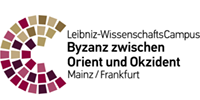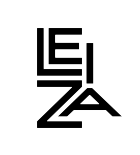Illustrations of Military Technology in Byzantine Manuscripts: Transfer and Adaptation of Ancient Knowledge in Byzantium
This consists of the works of Athenaeus (1st c. BC), Biton (3rd c. BC), Heron of Alexandria (1st c. AD), Apollodorus of Damascus (1st c. AD) and Philon of Byzantium (3rd -2nd c. BC) and actually comprises two different literary genre: The belopoiica which deal with the construction of artillery and the poliorcetica which describe siege engines and techniques. Amongst the manuscripts which pass down this corpus are Par. suppl. gr. 607 (10th c.), die manuscripts Vat. gr. 1164, Par. gr. 2442 and Scor. Y-III-11, (11th c.) and the slightly younger fragments of Vind. phil. gr. 120 (14th c.). Apart from that there is the 10th century paraphrase Parangelmata Poliorcetica written by an Anonymous Byzantinus, sometimes referred to as "Heron" of Byzantium or Pseudo-Heron. It is based on the texts and illustrations of the ancient corpus. The manuscript Vat. gr. 1605 of the 11thc. also contains many illustrations.
The project's central topic is the development of the image tradition of the technical drawings within the poliorcetica and belopoiica. The manuscripts often preserve two different variations of the same image. So far, the art historical research on these illustrations had had its focus on the search for the ancient archetype or the question of the images' source value. Still the development of different variations of images within the ancient corpus has often been ignored. Only the illustrations of the 10th century paraphrase were noticed as being advanced and innovative.
One goal of the dissertation project is to consider the illustrations as testimonies of scientific and technical book illumination of middle Byzantine times, and in their function as a visual medium for knowledge transfer of ancient poliorcetics and military technology. How did technical drawings develop in Byzantium and what part did they play? Do the image variations represent different methods of illustration, an older and a younger one? Or do they rather serve different purposes, e.g. address different kinds of readers?
Questions surrounding the historical context of these illustrations and manuscripts also have to be considered, not alone questions concerning the transfer of knowledge about military technology and mechanics in general in these times, but also questions like: Who were the readers of such manuscripts? What part played the manuscripts within the Byzantine culture of war? Was it intended to make practical use of the ancient knowledge transmitted in the manuscripts? Did these ancient techniques still have relevance? This shall be analyzed through other images and textual sources.
Another big question is whether the military technological manuscripts of Byzantium served as a formal model for western machine books of the 14th and 15th centuries. The development of technical drawings in late medieval Italy and Germany is comparable to the development in Byzantium, but so far it is unclear which traditions the western engineers built upon and whether Byzantine manuscripts served as inspiration. However, evidence points towards the manuscript Vat. gr. 1605 having found its way into the west prior to the era of humanism. There are some interesting ideas about how it could have influenced wester military technology. This shall also be examined further. Thus, many different areas in which the Byzantine illustrations of military technology could have served as a mediator of ancient knowledge shall be covered in this project.
Supervision:
Prof. Dr. Ute Verstegen (Erlangen)
Prof. Dr. Johannes Pahlitzsch (Mainz)
Sponsorship:
DFG (RTG 2304)
Publications
- Katharina Schoneveld, Illustrationen zur Kriegstechnik in byzantinischen Handschriften. Transfer und Adaption antiken Wissens in Byzanz. Byzanz und die euromediterranen Kriegskulturen 2 (Mainz 2024).








![[Translate to Englisch:] [Translate to Englisch:]](/fileadmin/_processed_/5/c/csm_Kriegstechnik_Schoneveld_46e20e53b4.jpg)




